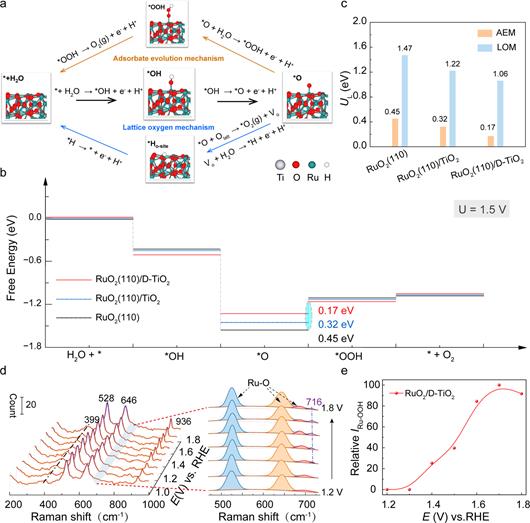
News

News
Recently, Prof. Kun Jiang from the Interdisciplinary Research Center for Engineering Science and the Institute of Fuel Cells, School of Mechanical Engineering have made new research progress in regulating the electronic structure of RuO2 toward balance improved oxygen evolution activity and durability. This work, entitled “Electronic Structure Modulation of RuO2 by TiO2 Enriched with Oxygen Vacancies to Boost Acidic O2 Evolution”, have been published at ACS Catalysis (IF = 13.7), with collaborators from Shanghai University of Electric Power, Wuhan University, Shanghai Advanced Research Institute and Fudan University. Mr. Xiaojun Wang, a postgraduate student, is the leading author. Profs. Kun Jiang, Yuzheng Guo, Qunjie Xu and Hui Yang are the co-corresponding authors.

In times of dwindling fossil fuels and growing greenhouse gas concerns, the search for alternative energy sources has attracted considerable interest in the past decades. Among various promising candidates, H2 as a renewable energy vector holds the potential to replace carbon-based fuels in transportation and mobile application scenarios. Yet, the green H2 production technique from water splitting is largely challenged by the sluggish oxygen evolution reaction (OER) at the anode and the harsh operation conditions in practical proton exchange membrane water electrolyzers.

Targeting on this issue, herein the authors report an electronic structure modulating strategy by dispersing RuO2, the most efficient acidic OER material reported so far yet suffering from insufficient stability, over defective TiO2 enriched with oxygen vacancies (RuO2/D-TiO2). Synergetic (spectro-)electrochemistry and theoretical simulations reveal a continuous band structure at the interface between RuO2 and defective TiO2, as well as a lowered energetic barrier for *OOH formation, which are accountable for the largely enhanced acidic OER kinetics. As a result, the as-prepared RuO2/D-TiO2 catalyst exhibits a low overpotential of 180 mV at 10 mA cm–2, a low cell voltage of 1.84 V at 2 A cm–2, and a long lifetime above 100 h at 200 mA cm–2, providing hints for a more robust acidic OER catalyst design.
This work was a part of the series researches on in situ deep-sea resources utilization at Jiang Research Group and supported by the Oceanic Interdisciplinary Program of Shanghai Jiao Tong University (SL2020MS007). Relevant works have been successively published at Angewandte Chemie International Edition, 2021, 60, 22740-22744 and ACS Sustainable Chemistry & Engineering, 2022, 10, 11232–11241 (highlighted as Front Cover Story).
Paper Link: https://pubs.acs.org/doi/10.1021/acscatal.2c01944

Shanghai Jiao Tong University
Address: 800 Dongchuan Road, Shanghai
200240